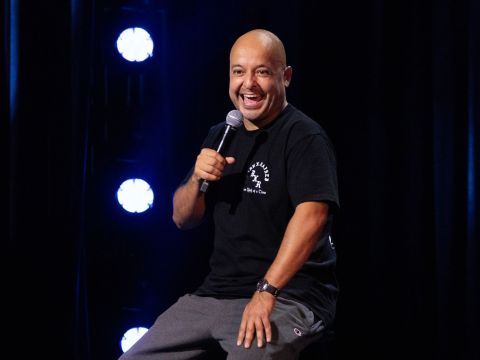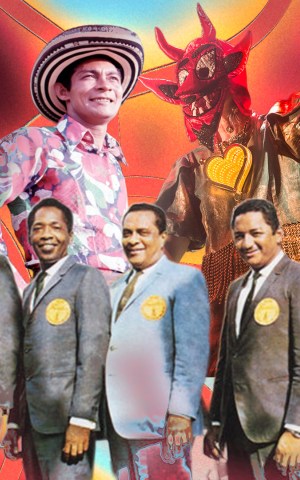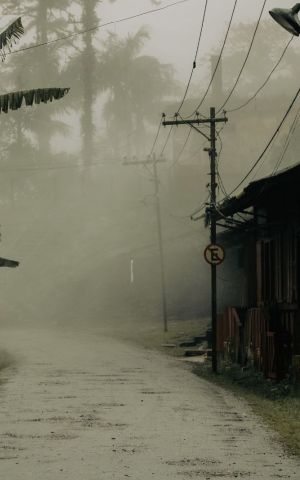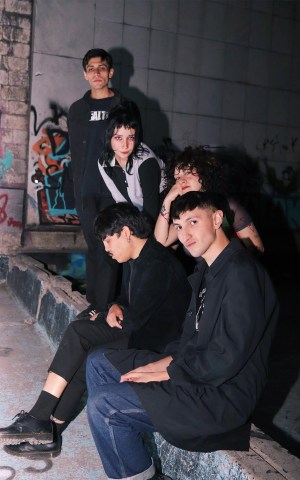The Mess is a new column from journalist Richard Villegas, who has been reporting on new, exciting sounds flourishing in the Latin American underground for nearly a decade. As the host of the Songmess Podcast, his travels have intersected with fresh sounds, scene legends, ancestral traditions, and the socio-political contexts that influence your favorite artists. The Mess is about new trends and problematic faves whilst asking hard questions and shaking the table.
We’re going there. We’re talking about it. Even if things get a little messy.
Colombian popetón is fucking boring. I know the world sang along to “Ginza” and “Mi Gente” throughout the 2010s, and there’s no denying J Balvin’s impact on the globalization of reggaeton, but I’m not sure el movimiento’s mission was ever to normalize perreo as elevator music. Any recurring reader of this column knows I’ve taken shots at Shakira’s lazy TikTok fodder, incurring waves of Internet vitriol and the occasional doxxing threat. But such is the road to global audiences: brand dilution that translates to greater profits. Back in 2021, I sensed a shift in the culture after Residente’s infamous “hot dog music” takedown of Balvin. And last year, the collective groan that followed Karol G’s “+57,” a label-made superstar vehicle convening Radio Disney Avengers Blessd, Feid, and Maluma, inspired much discourse about soulless blockbuster fatigue. But now, with the meteoric rise of family-friendly crooners Beéle and Kapo, I can’t help but wonder how long until Afrobeats become the new vibey default of the Uber Top 100.
I’m aware of my own bias as an indie snob — and perhaps that’s why I’m not worried about publicists blocking access to the aforementioned stars — but I truly believe Colombia has incredible music beyond what anodyne editorial playlists are showcasing. Over the years, on this very site, I’ve exulted the genre-omnivorous epics of Black artists in the city of Cali, spotlighting Dawer X Damper and Junior Zamora, as well as hybrids of Afro-diasporic tradition and futurism thriving across the country’s Pacific and Caribbean coasts. Medellín and Bogotá have also emerged as power players in the realm of Latin Club, refracting techno and rave through an unmistakably South American lens, even birthing the mutant irreverence of uwuaracha and Latin core. Likewise, within the zeitgeist pivot towards tropical roots sounds ushered by Bad Bunny, La Tricolor has demonstrated its evergreen authority over salsa and cumbia. I namecheck these waves not so you’ll come toil with me in the underground, but to encourage you to follow Colombian audiences out of the sunken place of stale popetón.

“You can actually feel the culture moving away from reggaeton, and more people listening to local artists,” says Juan Carlos “Cankita” Mindinero, musical director of Bejuco. The 10-piece ensemble hailing from the Southern Pacific city of Tumaco rose to prominence by melding traditional marimba with Nigerian Afrobeat, dovetailing into a coalition of roots guardians, including Semblanzas del Río Guapi and Canalón de Timbiquí, found on major festival stages and international tours.
“The Pacific is experiencing a very fertile chapter,” adds Mindiero. “Many musical currents converge here: Marimba, guitars, hip-hop, spiritual cantos, etc., and that’s how you get [rapper] Verito Asprilla, traditional groups like Agrupación Changó, and salsa choke [with M.A. Studio]. We have a duty to teach marimba, the foundation of traditional music, but modern sounds like salsa choke have also transformed lives across the territory.”
“Colombian rap is no longer a niche for people within hip-hop; it’s embedded into popular culture,” offers Bogotá rap dandy El Kalvo, highlighting one of the country’s most vibrant and emblematic movements. “[Earlier this month], Griselda Records and Lil Supa were performing in one packed venue, and at the same time, on the other side of the city, Alcolirykoz were playing their second sold-out show at the [Royal Center] auditorium. Our audience is a giant, heterogeneous mass of people who don’t respond to fads, and instead connect with stories and music that represent the struggle and verraquera of living in this country.”

Though El Kalvo’s discography is vast, the deep-voiced MC broke through last year with the cinematic storytelling of Los Tres Golpes, ruminating on Bogotá’s culinary treasures and gritty immigrant stories over sampled cumbias and boleros. His slick bars and restrained beats echo Colombian rap’s classic boom-bap codes, a standard set by trailblazing icons like Asilo 38 and La Etnnia decades ago. The scene graduated into a tentpole of contemporary Colombian music, dubbed by journalist Santiago Cembrano as “La Época del Rap de Acá” in his book of the same name. This bar-forward style predominates in the oeuvre of Penyair, N. Hardem, Rap Bang Club, Kei Linch, Oblivion’s Mighty Trash, and pack-leaders Alcolirykoz. Though you can also find thrilling deviations into trap (Ha$lopablito, Lil Keren), rock (Mabiland), and cumbia (Afroturro). Most intriguing is how these talents spring forth from cities across the country, with stories and styles that capture diverse and specific realities.
“Even though music infrastructure in Colombia is growing, reaching audiences outside centralized bubbles is still a challenge,” says singer-songwriter and clarinetist Gabriela Ponce, a mainstay of the country’s incisive folk resurgence. “In the music industry, aesthetics and production styles can become homogenized, so the voices of townsfolk are necessary. I got my start in my town orchestra, in Túquerres, Nariño, which is near the border with Ecuador, and it’s so important to nurture culture from those remote places rather than think you have to be the next Olivia Rodrigo. Our small, mobile identities are valuable too.”
“You can actually feel the culture moving away from reggaeton, and more people listening to local artists”
Ponce debuted seven years ago with her band Buha 2030, an avantist project weaving rock, progressive jazz, and the sonority of Andean carnivals. Their horns blared from a propulsive underground in the city of Pasto, where groups like Bambarabanda and Las Guaguas de Pank, and folk-rockers Lucio Feuillet and Briela Ojeda drew industry eyes to the Colombian South. Though Ponce eventually moved to Bogotá, her 2023 LP El Sur del Ser thrust her into a national conversation of singer-songwriters rejuvenating people’s activism (Edson Velandia, La Muchacha) and cultivating inner sanctums (Ana María Vahos, Mariscos).
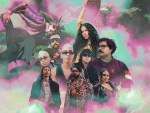
Like the rap scene, Colombian folk has made an international splash, with Bogotá label In-Correcto wisely building bridges to regional institutions like Chile’s Uva Robot and Uruguay’s Feel de Agua. But there are a million other roads you can go down: If you’re a rocker, check out Margarita Siempre Viva, Nicolás y los Fumadores, and Yo No La Tengo, bands whose cheeky, introspective lyrics and experimental production updated a homegrown sound long stuck in a leather jacket past. If you’re in a dancier mood, a new compilation from DJ and curator Edna Martínez is giving champeta and Picó culture a big boost, while the exuberant percussion of ritmo exótico is poised to blow up by way of Los Dioses del Ritmo and Tostao.
As I said before, I don’t expect everyone to share my predilection for weird indie music, but you, dear reader and consumer, deserve better than the reheated slop Medellín hit-factories are piping into your streaming algorithms. Or really, “Medellín-branded,” since most of popetón’s biggest stars are Miami-based. Funny enough, I visited “La Ciudad de la Eterna Primavera” in 2022 hoping to scoop a popetón story, but the closest I got was a taxi driver brainwashing me into the cults of José and La Bichota, A Clockwork Orange-style. However, that harrowing ride revealed an interesting point: tourists now ask about the city’s fleet of pop stars more than they do Pablo Escobar. This is an unequivocal victory for Medellín, and Colombia at large — a land still haunted by the horrors of drug violence, even overseas.
So it ultimately doesn’t matter if Sebastián Yatra and Camilo’s songs are so light they’re best suited to soundtrack makeup tutorials. If a country’s legacy is music and culture, we all win.


